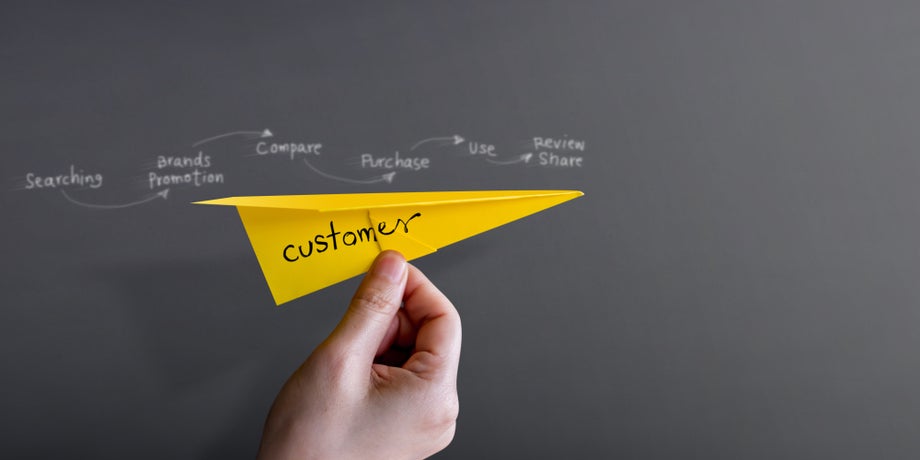15 years ago, there was no Airbnb, FitBit, Instagram, or Amazon Alexa. The iPhone had just launched, and Netflix had started its streaming service. Yet these products and services have quickly become a part of everyday life. We are all increasingly comfortable with a host of technology that allows us to track our wellbeing, share photos instantly, or ask our virtual assistant for help.
As the world rapidly changes, so do customer expectations. Brands are no longer judged against the competition but against the best experience a customer has with any brand, regardless of whether it is a product or service.
With the right technology and good design, any business can meet these rising customer expectations.
Here are 5 areas to focus on to satisfy your customer:
According to a recent report by McKinsey, 71% of consumers expect companies to deliver personalised interactions, and 76% get frustrated when this doesn’t happen. In other words, the vast majority of people want to feel like a company listens to them, understands them, and pays attention to their specific needs through tailored messaging, offers, and experiences.
Spotify is a great example. It started as a music library for listening to songs you knew, but today creates playlists based on the habits and unique preferences of each listener. Its features such as daily mixes, mid-year reviews, and favourite podcast topics, again all suggested by the listener’s existing behaviours, keep customers engaged and discovering new music with minimal effort on their part.
And what makes this even better is that it isn’t all about expensive technology and automation. While algorithms are a vital part of Spotify’s approach to personalisation, it uses humans to craft communications, curate playlists, hand pick, and filter any machine-driven suggestions.
We actively work with client and partner agencies to develop personalised content strategies as part of our broader performance programme. We recently worked with a client to create a more personalised customer experience using their new segmentation model. This ranged from simple things like using a customer’s name to make the product selection process feel more human to displaying product recommendations based on their lifestyle and reward preferences.
Know who your customers are, their past interactions and preferences, then use this information to deliver an experience using the right mix of people and automation.

Like it or not, we live in the age of instant gratification. A recent Google report found that consumer expectations for 24/7 services are on the rise, with searches for "24 7 customer service" up 500% in the past year and "next day flower delivery" up 800%.
Smart devices and social media mean people are used to having the ability to find the information they need, contact whomever they want and even order anything they'd like at any time of day. Customers expect live updates, faster responses, and service anywhere.
Amazon first offered 2-day delivery to Prime subscribers, then 1-day, same-day, and now it's just 2 hours for groceries. This has elevated expectations so that fast delivery is seen as standard.
KLM Royal Dutch Airlines uses WhatsApp to send customers booking details, boarding passes, and flight updates. They're also available 24/7 for questions or booking changes allowing customers to respond directly and know when their message has been read.
Make your customer service available at times and on platforms that are convenient and accessible for customers. Seek out partnerships or technology to fill any gaps in your operating model.

The rise of digital banks such as Revolut and N26 has shown how even the most complex services can be made faster, simpler, and safe. Therefore, when you look at your existing customer journey, are there any steps you can eliminate to make the process as seamless as possible?
Take a look at Molo Finance, a digital mortgage lender that combines innovative technology with top industry partners to make applying for a mortgage online easy. There’s no need for paper forms, appointments, manual review steps, wait times, or jargon. Built to be mobile-first, customers fill in straightforward questions and can link their bank accounts to provide proof of income rather than searching for and uploading various documents.
Everything is designed to give customers faster answers and increased visibility around eligibility decisions. It brings simplicity to a sector where most experiences still rely on traditional operating models.
Simplifying the customer journey was one of our key priorities when we worked with Fáilte Ireland on its Discover Ireland initiative. Finding the perfect holiday destination can be time-consuming and shrouded in uncertainty. What activities are available? Will it meet expectations or disappoint? Historically, customers had to switch between its four existing sites-Visit Dublin, Wild Atlantic Way, Ireland's Ancient East, and Ireland's Hidden Heartland. To streamline the process, Fáilte Ireland wanted to offer visitors a way to choose from all available in one location. Now in a single place, discoverireland.ie, holidaymakers have access to a large volume of content in various formats that highlight all of Ireland's counties, towns, tourism attractions, and special interest areas such as coastal escapes and outdoor areas experiences, and city breaks.
Think about your customer’s journey- how many steps it involves and how quickly a customer can move through them. What can you remove without losing the customer?

We’ve become so accustomed to switching between on and offline and various apps that we expect companies to do the same. Customers expect customer service agents to know that they spoke with someone from the company on Twitter the day before or that they received a push notification about a specific product. All too often, though, the transitions between channels fall short because of siloed customer data and departments.
One brand maintaining consistency well is Disney. You can book your trip on the website, use its app to plan your trip, ask questions, or book restaurants. Next, a beautiful box arrives in the post containing a MagicBand with your name on it. This is your bus pass, hotel room key, theme park ticket, photo storage, and payment device. Once in the theme park, you use your phone to navigate and see ride wait times. Post-trip, any ride photos or snaps with Disney characters are emailed to you.
Customers interact with your company in different ways. Make sure you build strong connections between all the various parts of their journey.

People want to know how ethical brands are and are actively switching to those who care about human rights, waste, carbon footprints, and biodiversity. Having a CSR statement isn't enough; customers want proof of your actions and commitments and to get involved.
Aspiration, a US digital bank, makes a point of declaring its stance. On its website, it says "There's a good chance your bank is using your money to fund oil projects that destroy the climate. Put your money where your values are." It puts promises into action by giving customers the option to round up their purchases to the nearest dollar to allow the bank to plant a tree every time they shop. Aspiration is committed to 'clean money', refusing to fund oil and coal industries and offer sustainable investments.
Having a strong commitment to a cause and making it easy for customers to take action helps gain trust and confidence in your CSR initiatives.






